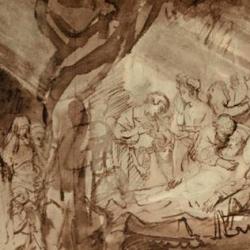Jack Collins of Covenant Seminary gave a fine paper on translation theory at ETS. He argued for “essentially literal” translation, or what he also called “transparent translation.” The goal of such translation is to render the original text in the receptor language as much as possible, and to make the receptor text as transparent to the syntax, imagery, word usage, ambiguities, etc as possible. He put it very nicely by saying that translation is an effort to allow a reader to listen in on a communication in a foreign tongue. Or, in another fine formulation, he commented on a Hebrew translation of Lewis’s Narnia tales that changed a reference to King Arthur into a reference to King David, the translation did not take the reader on a trip to England. Biblical translation should take the modern reader on a trip to ancient Israel, or to first-century Judea, Galilee, or Asia Minor. He gave some excellent examples of dynamic translations that fail to achieve this.
Perhaps the most trenchant insight in Collins’s paper was a comparison of “essentially literal” to “dynamically equivalent” translations. In an effort to make the ancient text have the same impact on a modern reader as the original text had on an ancient reader, dynamic translations like the NIV often interpret the text in a way that alleviates ambiguity. Ironically, this is LESS dynamic than an “essentially literal” translation, since the ancient reader would have been confronted with the ambiguity, while the modern reader is not. The NIV and similar translations, he suggested, do not allow the reader to take a trip to biblical times.















